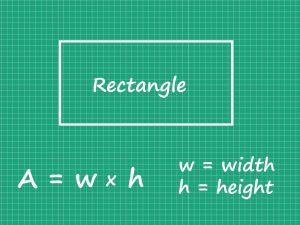Key Concepts
- Count on the numbers
- Add numbers below 20
- Add numbers in any order
- Find the missing numbers
Addition fact strategies
An equation uses an equal sign (=) to show that the value on the left is the same as the value on the right.
Example 1:


Answer:
6 + 3 = 9
3 + 6 = 9
→ 6 + 3 = 3 + 6 = 9
Example 2:
Does 5 + 2 = 2 + 5? How do you know?


Answer:
5 + 2 = 7
2 + 5 = 7
→ 5 + 2 = 2 + 5 = 7
Addends
You can change the order of the addends.
Example 1:

You can add numbers in any order, and the sum is the same.
So, 6 + 3 = 3 + 6.
You can write the facts this way, too

Example 2:
Does 6 + 4 = 4 + 6? How do you know?

Answer:
6 + 4 = 10
4 + 6 = 10
→ 6 + 4 = 4 + 6 = 10
Find the missing numbers
Example 1:
6 + ______ = 4 + 6
Answer:
Here, we can observe equal sign which shows that the value on the left is the same as the value on the right.
4 + 6 = 10
And 6 + ___ = 10
→ 10 – 6 = 4
→ So, the missing number is 4
Example 2:
8 + 2 = ____ + 8
Answer:
Here, we can observe an equal sign which shows that the value on the left is the same as the value on the right.
8 + 2 = 10
And ___ + 8= 10
→ 10 – 8 = 2
→ So, the missing number is 2
Example 3:
Add the numbers displayed on the top of the dice.

Answer:
6 + 1 = 7
Example 4:
Count the total number of apples and oranges. Find the total number of fruits.

Solution:
Number of apples = 10
Number of oranges = 16
Total number of fruits = 10 + 16 = 26
Exercise
- Count on to find the sum. Then change the order of the addends.

- Count on to find the sum. Then change the order of the addends.

- Count on to find the sum. Then change the order of the addends.

- Count on to find the sum. Then change the order of the addends.
- Count on to find the sum. Then change the order of the addends.

- Count on to find the sum. Then change the order of the addends.

- Count on to find the sum. Then change the order of the addends.

- Count on to find the sum. Then change the order of the addends.

- Find the missing numbers:

Summary
- Counting on the greater number is easier.
- An equation uses an equal sign (=) to show that the value on the left is the same as the value on the right.
- You can change the order of the addends.
Concept Map

What have we learned
- Count on the numbers
- Add numbers below 20
- Add numbers in any order
- Find the missing numbers

Related topics
Addition and Multiplication Using Counters & Bar-Diagrams
Introduction: We can find the solution to the word problem by solving it. Here, in this topic, we can use 3 methods to find the solution. 1. Add using counters 2. Use factors to get the product 3. Write equations to find the unknown. Addition Equation: 8+8+8 =? Multiplication equation: 3×8=? Example 1: Andrew has […]
Read More >>Dilation: Definitions, Characteristics, and Similarities
Understanding Dilation A dilation is a transformation that produces an image that is of the same shape and different sizes. Dilation that creates a larger image is called enlargement. Describing Dilation Dilation of Scale Factor 2 The following figure undergoes a dilation with a scale factor of 2 giving an image A’ (2, 4), B’ […]
Read More >>How to Write and Interpret Numerical Expressions?
Write numerical expressions What is the Meaning of Numerical Expression? A numerical expression is a combination of numbers and integers using basic operations such as addition, subtraction, multiplication, or division. The word PEMDAS stands for: P → Parentheses E → Exponents M → Multiplication D → Division A → Addition S → Subtraction Some examples […]
Read More >>System of Linear Inequalities and Equations
Introduction: Systems of Linear Inequalities: A system of linear inequalities is a set of two or more linear inequalities in the same variables. The following example illustrates this, y < x + 2…………..Inequality 1 y ≥ 2x − 1…………Inequality 2 Solution of a System of Linear Inequalities: A solution of a system of linear inequalities […]
Read More >>Other topics







Comments: